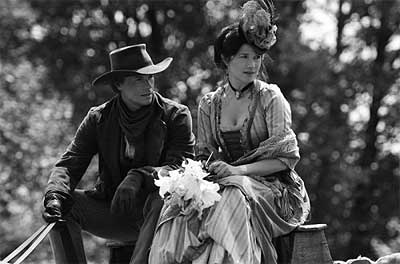
THE ORIGINAL MAIL ORDER BRIDES
By Bob Jamison
The New World offered unlimited opportunities. It held vast fertile and vacant land with waving fields of grass for livestock. It held promise for relief from repression and undue burden of taxation with little or no representation. Game as a food source and fur was for the taking. Regardless it was a very dangerous area. Whatever the risk, there was one major lacking in the New World, women.
From the time that La Salle discovered the route from French Quebec down the Mississippi River to the warm waters of the Gulf of Mexico, his King Louis XIV of France encouraged adventurers to go west and discover even greater territory than that of the upper reaches of the cold winter seasons in Canada. With opportunities such as they were, it would further establish the French presence. La Salle had already made claim of all that is drained by the Mississippi River for France. This included one of the settlements called La Louisiane which is an area now known as Mobile Bay and the current city of Mobile, Alabama. In l702 it became a prime target for settlement.
La Louisiane (named for Louis XIV) was soon to change its name to La Mobile after the Mobilian Indians of the area. A fort was built and, of course like many others, was to be named Fort St. Louis. Even the daring but difficult LaSalle named the fort he built just north of present day Port Lavaca, Texas as Fort St. Louis. And naturally as he explored the shores of the Mississippi, one of the forts he established is now known as St. Louis, Missouri.
Pierre Le Moyne d’Iberville (1661-1706) a French-Canadian explorer was responsible for the establishment of that colony of French Louisiana. With his strong connection with the Roman Catholic Bishop of Quebec, women became an issue. All the while the Bishop did not like the idea of his following to wind up choosing local wives (Native American Indian women) that might be considered as heathens compared to proper ladies from France. So the men were promised women of culture to be shipped from France in due time. That time was not to be so soon.
In the first place, many potential wives in France had heard quite a lot of these opportunities but they also heard some of the happenings such as unbelievable hardships, disease and savage Indian attacks. On the other hand, many young ladies in the convents or controlled schools of learning wanted some better destinies in their lives. But instead of the hundreds of women promised, there was a scant thirty or more that made the first voyage on the French frigate, Le Pelican. They became known then as the Pelican Girls.
As it turned out, this was not a luxury cruise across the North Atlantic. The boat was crowded with supplies, crates, livestock and little sanitation comfort. The preparations for the trip lasted most of the winter and left France in the front of the storms of spring which added to their discomfort and sea sickness. Some of the stops for water and food such as Hispaniola and others were so populated with pirates and other undesirables the young women were not even allowed ashore.
Finally, they reached Havana, Cuba where they briefly enjoyed seeing people again and associating with a new culture. Along with that came mosquitoes and with the mosquitoes came a malady called Yellow Fever or maybe Malaria. This they brought to Mobile causing further discomfort. Many others include natives suffered and died as a result.
When the ship landed the shores were crowded with hopeful husbands to see the beautiful and educated young women. Surely these men must have expected the women possessed the tops of frontier enthusiast. But instead, they looked at a line of women that had aged from the rigors of months at sea and disease from the mosquitoes. They must have looked to be a very sad lot.
Soon things got much better though and within a few weeks more than half of the girls were married. By autumn the mosquitoes had disappeared and so had the Yellow Fever. On the other hand, the ladies of France who had once enjoyed their wonderful breads found there was no wheat and they must substitute with cornbread. This was not readily acceptable. Regardless, life in what is now the United States began with an order being filled for brides of far away. Afterwards, there came more women and more babies. Hence, Le Pelican had not only brought women to the New World, they brought a future for America.